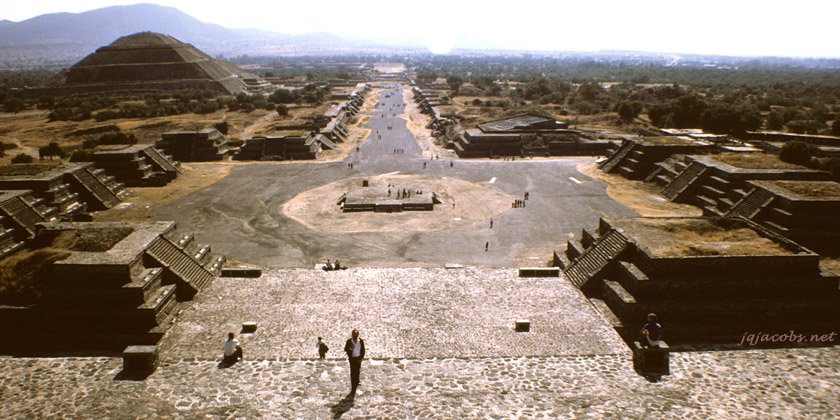Mesoamerican Three Part Special on pre-Aztec Teotihuacan
Who were the Teotihuacanos?
When someone says pyramid, most people think of Egypt. The New World, in Mesoamerica specifically, there are also pyramids. According to the Aztecs who inhabited Teotihuacan around 1111 CE the city claimed the great city was where the gods created the world we know. The great city of Teotihuacan was not built by the Tula whom inhabited the land prior to the Aztecs, but by a more mysterious, unknown people - lost in history - the Teotihuacanos.
The greatest Mesoamerican Classic planned civilization was Teotihuacan, located in the Teotihuacan valley, “a side pocket of the Valley of Mexico,” during 150 BCE – 200 CE. Abundant natural resources made life possible and farmers moved into this fertile land. The fully urbanized city covered 20 sq. kilometers and was laid out in a grid pattern. Its main axis is the Avenue of the Dead (15° 25’ 00” E). The sacred path is marked by the Pyramid of the Moon to the north and by the Temple of Quetzalcoatl at the center.
 |
| Site map of Teotihuacan |
The cosmopolitan city is divided into two wards: the western Oaxaca ward and the eastern Veracruz and Maya ward. Each culture that came to visit had its own unique area to “carry on their own customs and worship their own gods.” The palaces in these wards were raised on platforms. Apartment compounds surround the raised central and two flanking temples. This organizational style is referred to as triadic temple arrangements. Most compounds have two or more “rich” burials which suggests that royalty or the “founders” held special honors.
Mesoamerican cultures worshiped deities just like the Ancient Old World civilizations. The most important deity seems to be the “Spider Woman,” a female deity and patroness of our world. The rain god, Tlaloc, is easily recognizable along with the sun god, moon goddess, and Xipe Totec. Xipe Totec was a symbol for the annual renewal of vegetation when the rainy season began. All of the Teotihuacano deities are intimately linked to agriculture, or more specifically maize – the staff of life.
Teotihuacan was economically linked with the Gulf Coast Olmec society. Artifacts have reinforced this point: there is a significant amount of Jade in Teotihuacan (Olmec product) and the Teotihuacan art style is visible in potsherds in Olmec sites.
.jpg) |
| Tlaloc, the rain god |
Home: BACK <
Works Cited.
Coe, Michael D. and Rex Koontz. (2008) Mexico: from the Olmecs to the Aztecs. 6th Ed. New York: Thames and Hudson.





0 comments:
Post a Comment